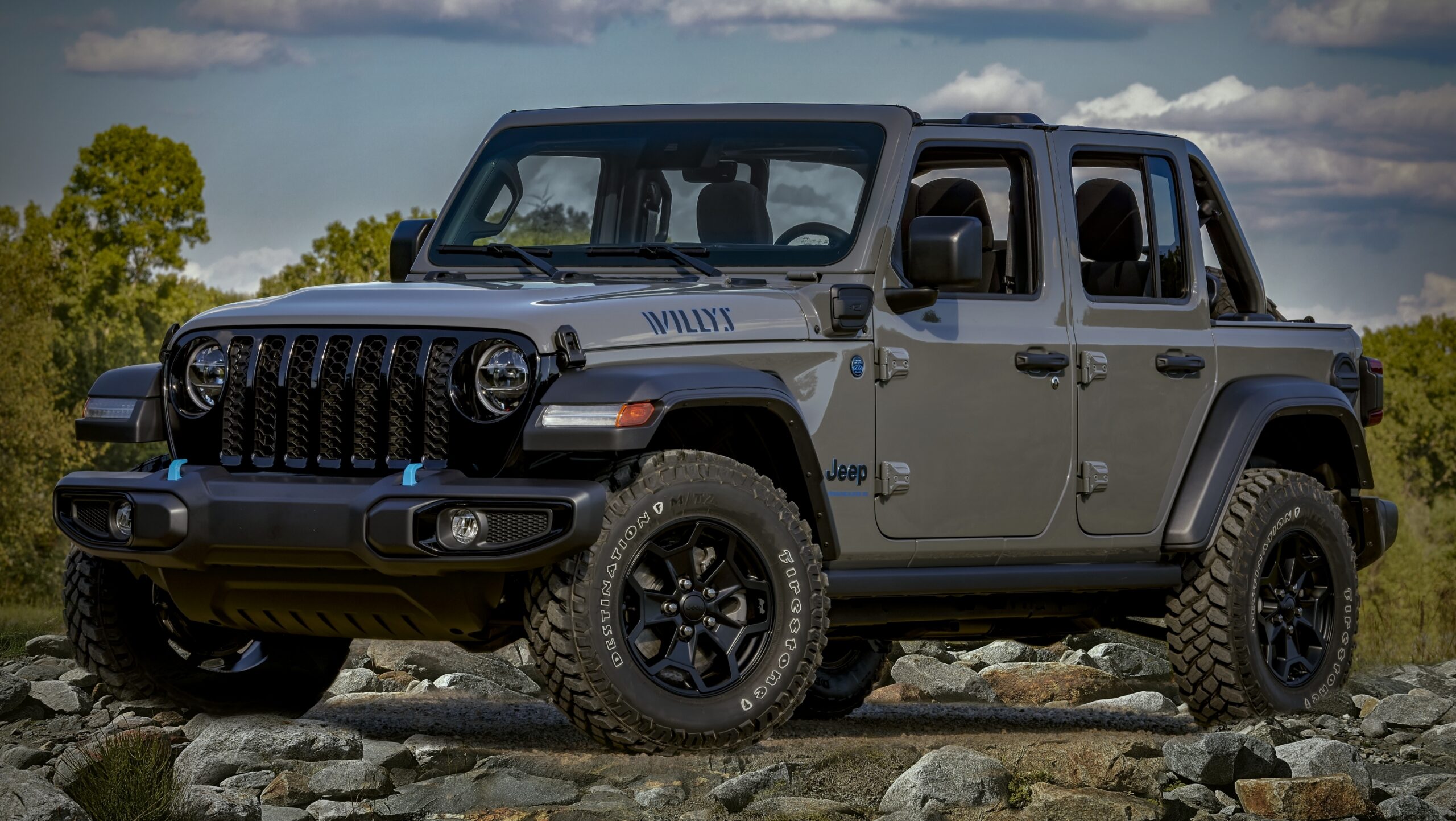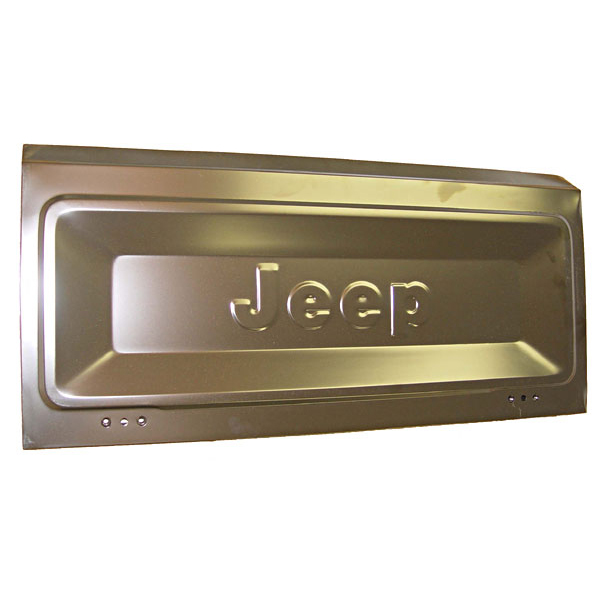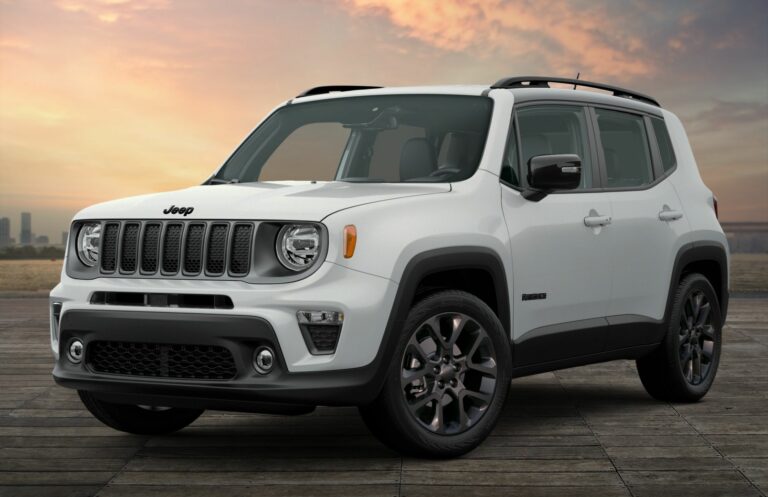Jeep Cherokee KJ For Sale: Your Comprehensive Guide to Finding and Owning a Capable SUV
Jeep Cherokee KJ For Sale: Your Comprehensive Guide to Finding and Owning a Capable SUV jeeps.truckstrend.com
The Jeep Cherokee KJ, known as the Jeep Liberty in North America, represents a significant chapter in Jeep’s storied history. Produced from 2002 to 2007, the KJ model stepped away from the traditional solid-axle front suspension of its XJ predecessor, introducing an independent front suspension system. This change aimed to provide a more refined on-road driving experience while striving to retain the legendary off-road prowess Jeep enthusiasts demand. Today, the Jeep Cherokee KJ stands as an increasingly popular choice in the used vehicle market, offering an enticing blend of affordability, utility, and genuine capability. For those seeking a versatile SUV that can handle both daily commutes and adventurous weekends without breaking the bank, a Jeep Cherokee KJ for sale presents a compelling proposition. This guide will delve into everything you need to know about finding, evaluating, and owning one of these unique vehicles.
Jeep Cherokee KJ For Sale: Your Comprehensive Guide to Finding and Owning a Capable SUV
Understanding the Jeep Cherokee KJ (2002-2007): A Brief Overview
The KJ generation of the Jeep Cherokee marked a departure from its square-bodied ancestors, adopting a more rounded, contemporary design. Despite initial skepticism from some purists regarding its independent front suspension (IFS), the KJ quickly proved its worth, earning a reputation for surprising off-road capability when properly equipped.
Key Features and Specifications:
- Production Years: 2002-2007
- Engine Options:
- 2.4L PowerTech I4: A four-cylinder gasoline engine, primarily found in earlier models, offering adequate power for daily driving but often considered underpowered for heavier off-road use or towing.
- 3.7L PowerTech V6: The most common and popular gasoline engine, providing a good balance of power and torque for both on-road and light to moderate off-road use.
- 2.8L VM Motori CRD (Common Rail Diesel): Available in certain markets (notably 2005-2006 in North America), this diesel engine is highly sought after for its impressive torque, fuel efficiency, and towing capabilities.

- Transmission Options:
- Manual: A 5-speed or 6-speed manual transmission was available with both the 2.4L and 3.7L engines, though significantly rarer.
- Automatic: A 4-speed automatic (42RLE) was standard with the 3.7L V6 and 2.8L CRD, and also an option for the 2.4L.
- 4WD Systems:
- Command-Trac (NP231): A part-time 4WD system, ideal for off-road use but not recommended for full-time use on paved surfaces.
- Selec-Trac (NP242): A full-time capable 4WD system, allowing for use on any surface, including dry pavement, in 4WD Full-Time mode, in addition to part-time 4WD options. This is generally preferred for its versatility.

- Trims: Sport, Limited, Renegade, and occasionally special editions. Renegade models often featured unique exterior styling and slightly different suspension tuning.
The KJ stands out for being the first compact Jeep SUV to use rack-and-pinion steering and independent front suspension, aiming for improved ride comfort and handling. Yet, its relatively short wheelbase and ample ground clearance, combined with robust frame construction, allowed it to maintain a significant degree of off-road prowess that many contemporary SUVs lacked.
Why Buy a Used Jeep Cherokee KJ? Benefits and Appeal
The allure of a used Jeep Cherokee KJ extends beyond its iconic seven-slot grille. Several factors contribute to its continued popularity:
- Exceptional Affordability: One of the most significant benefits is the KJ’s price point. They are readily available on the used market at very competitive prices, making them an excellent entry point into the world of capable 4x4s or a budget-friendly daily driver.
- Genuine Off-Road Capability: Despite the IFS, the KJ is surprisingly capable off-road. With proper tires, a modest lift, and a skilled driver, it can tackle trails that would leave many crossover SUVs stranded. Its compact size also makes it nimble on tighter trails.
- Practicality and Utility: The KJ offers a comfortable interior with adequate space for four adults and a decent cargo area, especially with the rear seats folded down. It’s suitable for family duties, hauling gear, or even light towing.
- Strong Aftermarket Support: The Jeep community is vast and passionate, and the KJ is no exception. A wide array of aftermarket parts, including lift kits, skid plates, bumpers, and performance upgrades, are available, allowing owners to customize their vehicle for specific needs.
- Durability (If Maintained): While not without its quirks, a well-maintained KJ is a robust vehicle. Its body-on-frame construction (though technically unibody with integrated frame rails, often colloquially referred to as body-on-frame due to its strength) provides a solid foundation.
- Diesel Power Option (CRD): For those lucky enough to find a 2.8L CRD model, the benefits are substantial: excellent fuel economy for an SUV of its size, impressive low-end torque for off-roading or towing, and a distinct driving experience.
Key Considerations When Searching for a KJ
Before you commit to a Jeep Cherokee KJ for sale, a thorough evaluation is paramount. Here’s what to look for:
- Engine Choice & Health:
- 3.7L V6: Listen for any knocking, ticking, or excessive valvetrain noise. Check for signs of overheating. Early 3.7L engines (pre-2004) had some issues with valve seats; ensure proper maintenance records.
- 2.4L I4: Simpler, but confirm it feels adequately powered for your needs.
- 2.8L CRD: Look for strong acceleration and no excessive smoke. Check for oil leaks around the turbocharger or vacuum pump. Maintenance is crucial for CRDs, especially timing belt service and proper oil changes.
- Transmission: Test both automatic and manual transmissions for smooth shifts and no slipping or grinding. Ensure the 4WD system engages and disengages properly in all modes (2H, 4H, 4L, 4FT if Selec-Trac).
- Rust: This is a major concern, especially in areas that use road salt. Pay close attention to:
- Frame Rails: Inspect thoroughly, especially near the control arm mounts.
- Rocker Panels: Beneath the doors.
- Rear Bumper/Hitch Area: Where moisture can collect.
- Fender Wells and Floorboards: Check for perforations.
- Suspension Components: The KJ is known for needing front suspension work. Check for worn ball joints (upper and lower), tie rods, control arm bushings, and strut mounts. Listen for clunks or squeaks during the test drive.
- Common Issues:
- Window Regulators: Electric window failures are common. Test all windows.
- Exhaust Manifold Cracks: Can cause ticking noises, especially on startup.
- Cooling System: Check radiator, hoses, and water pump for leaks or signs of neglect.
- Electrical Gremlins: Test all lights, gauges, HVAC, and power accessories.
- Recalls: Check the VIN for any open recalls, particularly the rear lower control arm recall (for some 2002-2004 models) and the fuel tank shield recall (for certain models).
- Maintenance History: A comprehensive service history is invaluable. It indicates how well the previous owner cared for the vehicle. Look for regular oil changes, transmission services, and evidence of proactive repairs.
- Previous Modifications: If the KJ has been lifted or modified, assess the quality of the work. Poorly installed lifts can lead to premature wear on components and alignment issues.
Where to Find a Jeep Cherokee KJ For Sale
Finding your ideal KJ requires patience and knowing where to look:
- Online Marketplaces:
- Facebook Marketplace: Often a great source for private sellers. You can filter by price, location, and even specific keywords like "KJ" or "Liberty diesel."
- Craigslist: Similar to Facebook, but exercise caution and always meet in a safe, public place.
- AutoTrader, Cars.com, CarGurus: Larger platforms that list both dealership and private seller vehicles.
- Specialty Forums and Clubs: Online Jeep forums (e.g., JeepForum.com, LostJeeps.com) or local Jeep clubs often have classified sections where enthusiasts sell well-maintained vehicles. These can be goldmines for finding KJs that have been cared for.
- Used Car Dealerships: While less common for KJs nowadays due to their age, some smaller, independent dealerships might have them. Be wary of inflated prices or lack of detailed history.
- Word of Mouth: Let friends, family, and colleagues know you’re looking. Sometimes the best deals come from unexpected sources.
The Buying Process: A Step-by-Step Guide
Once you’ve identified a potential KJ, follow these steps to ensure a smart purchase:
- Set Your Budget: Determine your maximum purchase price, but also factor in potential immediate repairs, insurance, registration, and initial maintenance.
- Research Specific Models/Trims: Know which engine and 4WD system you prefer. This will help narrow your search.
- Initial Contact & Questions: Before seeing the vehicle, ask key questions: Why are they selling? How long have they owned it? Any known issues? What maintenance has been done?
- First Inspection: When you see the vehicle, do a thorough visual inspection (as outlined in "Key Considerations" above). Look for fluid leaks, mismatched paint, tire wear patterns, and rust. Check the interior for excessive wear, strange odors, or warning lights.
- Test Drive: Drive the KJ on various roads if possible – city, highway, and perhaps even some rough terrain if the seller permits. Listen for unusual noises, feel for vibrations, test the brakes, steering, and all gears (including 4WD modes).
- Pre-Purchase Inspection (PPI): This is arguably the most crucial step. Take the vehicle to an independent, trusted mechanic (preferably one familiar with Jeeps) for a comprehensive inspection. They can identify issues you might miss and provide an estimate for necessary repairs.
- Run a VIN Check: Use services like CarFax or AutoCheck to get a detailed history report. This can reveal accidents, flood damage, salvage titles, odometer discrepancies, and service records.
- Negotiate the Price: Based on your inspection and the market value, negotiate a fair price. Be prepared to walk away if the seller is unwilling to budge on a vehicle with significant issues.
- Complete Paperwork: Ensure the title is clear, all transfer documents are correctly filled out, and you have a bill of sale. Check your local DMV requirements for vehicle transfer.
Tips for KJ Ownership and Maintenance
Owning a Jeep Cherokee KJ can be a rewarding experience, but proactive maintenance is key to its longevity:
- Regular Fluid Changes: Adhere to or exceed manufacturer recommendations for engine oil, transmission fluid, differential fluids, and transfer case fluid.
- Monitor Suspension Components: The KJ’s independent front suspension components, especially ball joints and tie rods, are wear items. Inspect them regularly and replace them proactively to avoid costly repairs or unsafe driving conditions.
- Cooling System Vigilance: Ensure the cooling system is in top shape, especially on 3.7L V6 models. Flush coolant regularly and check for leaks.
- Address Recalls Promptly: If your KJ has any open recalls, get them addressed by a Jeep dealership.
- Rust Prevention: In rust-prone climates, wash the underside of your vehicle regularly, especially after driving on salted roads. Consider applying rust inhibitors or undercoating.
- Tire Management: Rotate tires regularly and maintain proper inflation to maximize tire life and optimize handling.
- Join Online Communities: Websites like LostJeeps.com or dedicated Facebook groups are invaluable resources for troubleshooting, modification ideas, and finding advice from experienced KJ owners.
Estimated Jeep Cherokee KJ Price Table (USD)
Prices for used vehicles are highly variable based on mileage, condition, engine type, transmission, 4WD system, trim level, location, and demand. The table below provides estimated ranges for a Jeep Cherokee KJ for sale. These are not definitive but rather a general guide.
| Year | Engine | Condition (General) | Estimated Price Range (USD) | Notes |
|---|---|---|---|---|
| 2002 | 3.7L V6 | Fair | $2,000 – $4,000 | Higher mileage, potential for more wear. |
| 2002 | 3.7L V6 | Good | $4,000 – $6,000 | Well-maintained, moderate mileage. |
| 2003 | 3.7L V6 | Fair | $2,200 – $4,500 | |
| 2003 | 3.7L V6 | Good | $4,500 – $6,500 | |
| 2004 | 3.7L V6 | Fair | $2,500 – $5,000 | Last year for some specific recall issues. |
| 2004 | 3.7L V6 | Good | $5,000 – $7,000 | |
| 2005 | 3.7L V6 | Good | $5,500 – $7,500 | Refined models, common. |
| 2005 | 2.8L CRD | Good | $7,000 – $12,000+ | High demand, rare, often well-maintained by enthusiasts. |
| 2006 | 3.7L V6 | Good | $6,000 – $8,000 | Generally solid models. |
| 2006 | 2.8L CRD | Good | $8,000 – $15,000+ | Premium for well-maintained CRD. |
| 2007 | 3.7L V6 | Good | $6,500 – $9,000 | Final year, often lowest mileage. |
| All | 2.4L I4 | Fair-Good | $1,500 – $4,000 | Lower demand, less powerful. |
| All | Excellent/Low Mileage | Excellent | $8,000 – $15,000+ | Exceptional condition, very low mileage, or highly modified/rare CRD. |
Note: These prices are estimates for privately sold vehicles and do not include dealer markups, taxes, or registration fees. Vehicles with significant modifications (e.g., high-quality lift kits, aftermarket bumpers, winches) may command higher prices.
Frequently Asked Questions (FAQ) about the Jeep Cherokee KJ
Q: Is the Jeep Cherokee KJ reliable?
A: With proper maintenance, the KJ can be quite reliable. The 3.7L V6 engine is generally robust, and the common issues (like window regulators and suspension components) are well-known and often relatively inexpensive to fix. The 2.8L CRD engine is also reliable but requires specific maintenance and attention to its timing belt.
Q: What’s the best engine for a KJ?
A: For most users, the 3.7L V6 offers the best balance of power, reliability, and parts availability. For those prioritizing fuel economy and low-end torque for towing or serious off-roading, the 2.8L CRD is superior, but it comes with higher acquisition costs and more specialized maintenance requirements. The 2.4L I4 is generally considered underpowered.
Q: Can the KJ really go off-road?
A: Absolutely! Despite its independent front suspension, the KJ retains significant off-road capability. Its short wheelbase, decent ground clearance, and robust 4WD systems (especially Selec-Trac) make it a formidable trail machine. Adding a modest lift and aggressive tires further enhances its performance.
Q: Are parts readily available for the KJ?
A: Yes, parts for the Jeep Cherokee KJ are generally easy to find. Common wear items and maintenance parts are available at most auto parts stores. Aftermarket support for upgrades and off-road accessories is also extensive.
Q: What’s the typical fuel economy of a KJ?
A: Fuel economy varies by engine and transmission:
- 3.7L V6: Typically 15-18 MPG combined (city/highway).
- 2.4L I4: Around 18-22 MPG combined.
- 2.8L CRD: Can achieve 20-25 MPG combined, making it the most fuel-efficient option.
Actual mileage will depend on driving habits, vehicle condition, and modifications.
Q: What are the common rust spots to check on a KJ?
A: The most critical areas for rust are the frame rails (especially near the front and rear suspension mounting points), rocker panels, the area around the fuel tank, and the spare tire well. Thoroughly inspect these areas, as severe rust can be a deal-breaker.
Conclusion
The Jeep Cherokee KJ, whether you call it a Cherokee or a Liberty, offers a unique blend of on-road comfort and genuine off-road capability, making it an excellent choice for a used SUV. Its affordability, coupled with a robust platform and extensive aftermarket support, ensures that it remains a relevant and desirable vehicle for a wide range of buyers – from the budget-conscious daily commuter to the weekend off-road enthusiast.
While finding the right Jeep Cherokee KJ for sale requires diligence in inspection and understanding its common quirks, the rewards of owning such a versatile and capable vehicle are significant. By following the advice in this guide, you can navigate the used market confidently, secure a well-maintained KJ, and embark on countless adventures, knowing you have a reliable and fun-to-drive Jeep by your side. It truly represents an exceptional value proposition for those seeking a capable SUV without the new car price tag.




